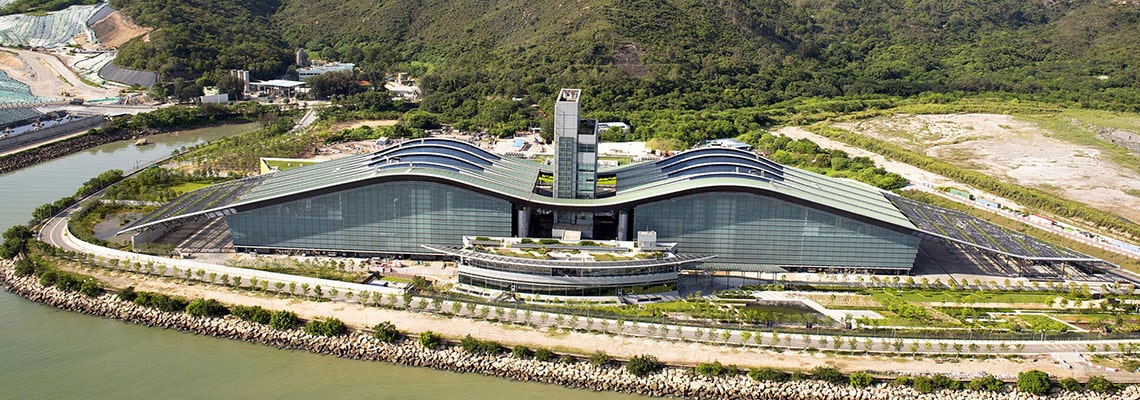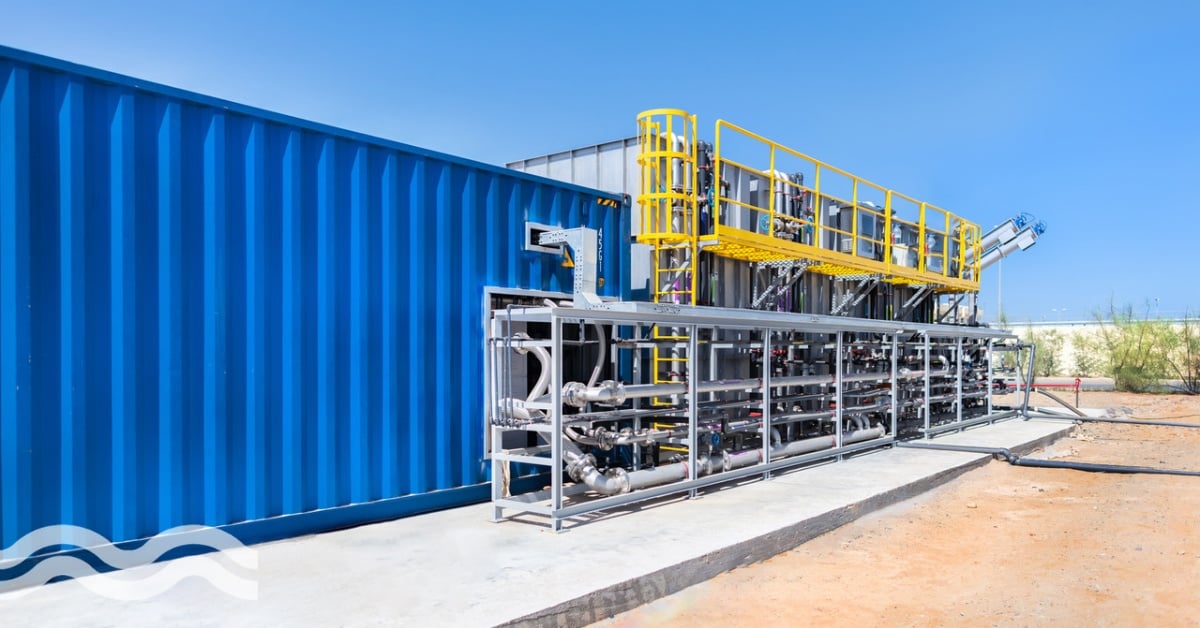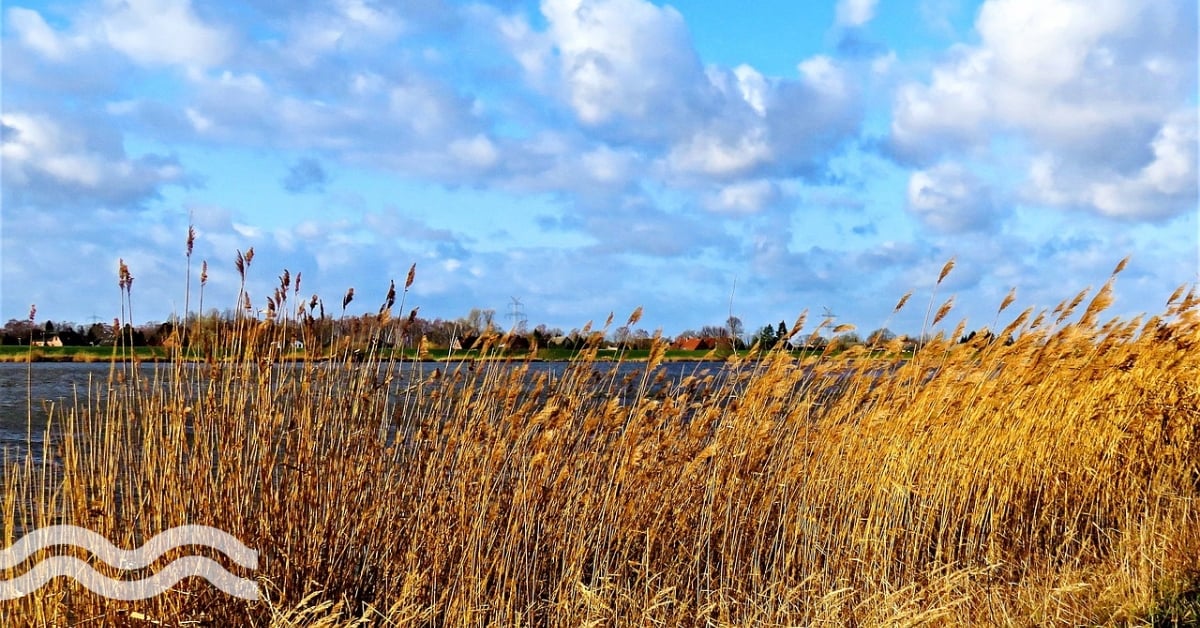Can sludge treatment be beautiful - A Hong Kong spa proves it can
The T·PARK project is a demonstration that with the right circular ambition, stunning architecture can combine innovative engineering with natural beauty and even a spa.
Autonomous facility combines advanced technologies with spa treatment
Mention the word sludge and it hardly evokes images of natural beauty. After all, we are talking about a by-product from human sewage treatment – a process that historically has been kept out of sight and out of mind.
Yet one of the world's largest treatment plants has now been operating successfully and proves that sludge can, in fact, be a thing of beauty.
Designed by French architectural company Claude Vasconi, the T·PARK project overlooks Deep Bay in Hong Kong and is more than a sludge treatment plant: it’s a spa, a power plant and a landscaped ecological garden home to kingfishers, water hens and dragonflies.
So why was such a sludge treatment plant designed like this?
Energy self-sufficiency
Before T·PARK started operation in early 2015, Hong Kong was producing nearly three million cubic metres of effluent per day.
From this around 1,200 tonnes of sewage sludge was being produced with the majority of this either buried or was released into the sea. By 2030, this is expected to reach 2000 tonnes per day.
Instead of disposing of disposing the wastewater by-product to sea, it was proposed to incinerate the sludge produced at Hong Kong’s 11 sewage treatment works from over seven million inhabitants.
It was French engineering company Veolia that secured the design, build and operate contract for T·PARK.
A combination of technologies was used to provide 2000 tonnes per day of sludge treatment capacity, 14 MW electricity produced during sludge treatment and 600 m3/day seawater desalination capacity.
The proposal included reducing waste production by 90 per cent, with 10 per cent of waste being sent to landfills.
For the energy generation, the sludge is treated using fluidised bed incinerator technology to produce steam, which is then transformed into electricity to power the plant.
When running at full capacity, an additional 2MW of surplus electricity can be generated back into the electricity grid.
Furthermore, through a small wastewater treatment plant that collects, processes and reuses the wastewater produced on-site for various uses such as irrigation and cleaning, the facility achieves zero effluent discharge into the sea.
Sludge-powered spa day
It’s clear T·PARK is not your usual sludge processing plant. The architecturally distinctive wave-like façade punctuates the 7-hectare site and includes a 70 per cent landscaped, or green roof coverage.
Engineering consultancy Arup was involved in the structural design, citing that “the building’s roofline reflects and integrates the sea view in front and ridgelines at the back, blending with the surrounding scenery”.
Furthermore, the 400m-long roof spans and unites two incinerator plants and a centrally located administration tower.
If that wasn’t enough, T·PARK also includes a recreational and educational public centre, a theatre, food court and even spa – three pools are heated from heat recovered from the sludge incineration process.
Wider Hong Kong ambitions
The development of T·PARK was part of a wider investment from Hong Kong into modernising its wastewater treatment plants.
A total of 16 Sewerage Master Plans were developed to serve the needs of each catchment area in Hong Kong.
Today, the Hong Kong government says, “above 93 per cent of the populace is served by the public sewerage system”.
This includes a sewerage network of about 1800 kilometres and around 300 sewage pumping stations and treatment plants, collecting 2.8 million cubic metres of sewage per day.
Water treatment has been one of four main priorities for the government since 1990, including waste management and recycling; reduce noise and improve air quality; optimise energy consumption and performance.
In May 2015, the Environment bureau of Hong Kong launched an "Energy Savings Plan for the Urban Environment of Hong Kong 2015-2025 +" and announced its goal of reducing energy intensity by 40 per cent by 2025 compared with 2005 figures.
Related content
Share your water technology stories with us
Do you have an innovation, research results or an other interesting topic you would like to share with the international water technology industry? The Aquatech website and social media channels are a great platform to showcase your stories!
Please contact our Sr Brand Marketing Manager Annelie Koomen.
Are you an Aquatech exhibitor?
Make sure you add your latest press releases to your Company Profile in the Exhibitor Portal for free exposure.
We promise never to send you spam and you can unsubscribe at any time!



